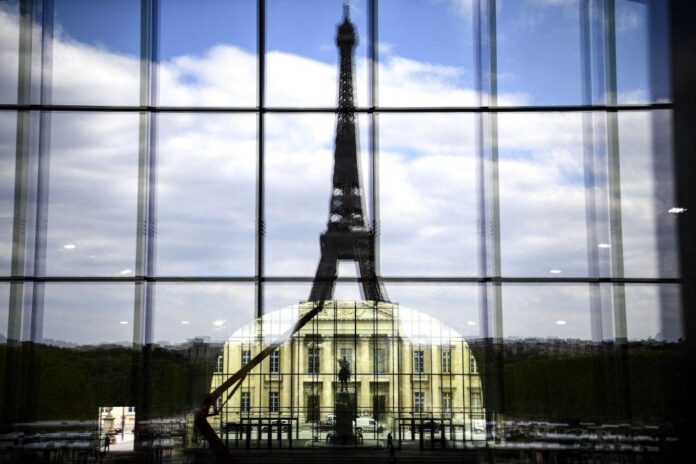Art market professionals in France are on the defensive as a European Union directive threatens to undo the country’s long-percolating art market growth overnight.
The E.U.-wide rule, which was quietly approved last April but will not take effect until 2025, will impose a 20 percent sales tax on artworks. The move has sent shockwaves through France’s art market, where art sales in many circumstances have benefitted from a reduced tax rate of 5.5 percent.
All E.U. member states must translate the directive into law by January 1, 2025, which means France must rewrite its current favorable sales tax system for artworks. French galleries took to social media yesterday to denounce the decision.
“Should we really let the French art market be killed in silence?” Galerie Perrotin wrote in an Instagram post yesterday, referring to an article about the issue in the French newspaper Les Echos. “This is an unprecedented increase in the price of works that will jeopardize the very survival of our artists and our galleries. No sector has ever accepted such an increase in VAT,” it added.
Artwork is currently considered a “cultural exception,” to French sales tax, so sales under certain circumstances, such as on artworks being imported into the country or being sold by an artist to a gallery, enjoy the reduced 5.5 percent rate. The standard 20 percent VAT rate in those cases only applies to profits made from a second sale of an artwork.
The tax hike will mean artworks will be exported “elsewhere, to freeports, to the U.S., to Hong Kong,” French gallerist Kamel Mennour explained to Artnet News over the phone. That eventuality would “smash the position that Paris has attained in the art market over the last 20 years, with Art Basel coming to Paris, and all these international galleries,” he said. “I chose to have my galleries very concentrated in France, which is why I think this is such a shame,” added Mennour who runs four galleries in Paris, and no spaces abroad. “We’re going to fight this and try to convince our leaders of how counter-productive it is,” he added.
Approved on April 5, 2022, but not applicable until January 1, 2025, the E.U. directive went largely unnoticed by many professionals until recently, due to its general application to goods and services, and indirect wording, representatives for France’s Professional Committee of Art Galleries (CPGA) told Artnet News. Mennour said he only learned about it a week ago.
On Wednesday, the CPGA issued a press release calling the E.U. directive “an irremediable attack on the art market in France.” The group, which represents primary and secondary market dealers, said it has “alerted the ministry of culture to obtain a [tax] exemption for artworks, and [ask] that France negotiates a moratorium [on the E.U. directive] at the European level.”
“The art market is the collateral damage of this directive,” CPGA president Marion Papillon told Artnet News. France’s art market has the most at stake with the new rule, in comparison to the “weaker” art markets of its E.U. peers. According to the CPGA, France represents 50 percent of art sales in the E.U., and over the last 20 years has painstakingly boosted its share of the global art market from 3 to 7 percent.
Papillon added that the new E.U. rule will specifically penalize France’s art market, which is in full swing, thanks to Brexit, among other things. “Right now, there’s a real dynamic energy in France, with the arrival of private art foundations, and our strong cultural offering. Economically speaking, we have every reason to support the art market,” she said.
The CPGA has also been working “behind the scenes” to negotiate solutions with French government officials since late last year, when they were informed of the regulation, which was approved “without any consultation with professionals nor an impact study,” despite its “serious economic consequences,” said Papillon. Artnet News reached out to the ministry of culture for comment but did not immediately hear back.
The rule will apply to any work sold in France whether it is by a gallery or directly from an artist’s studio, and it will also apply to works imported into France, thereby evening the playing field with other E.U. countries—France currently enjoys the lowest import tax rate in the E.U. and is therefore often preferred as an entry point to the rest of the bloc.
Immediate beneficiaries of an increase in VAT for artworks would be the US, the U.K., Hong Kong, and Switzerland, due to their significantly lower tax rates.
“Artworks are extremely mobile, so from a practical standpoint, we don’t really have much of a choice but to support their market, otherwise it just moves to another location at an incredibly fast speed. That is what politicians don’t understand,” sociologist and contemporary art expert Alain Quemin, told Artnet News. He compared the French VAT system to Spain’s, where sales tax is 21 percent, and Germany’s, where it is 19 percent, resulting in the latter not having “a very developed art market.”
“The French government is going to realize it made an enormous gaffe,” by “agreeing to an initiative without realizing it was completely suicidal,” added Quemin. “If we don’t have fiscal measures that are properly adapted to the market, we can destroy what we’ve built over the last few years, and then the door will be wide open for the English to step in,” he said.

























